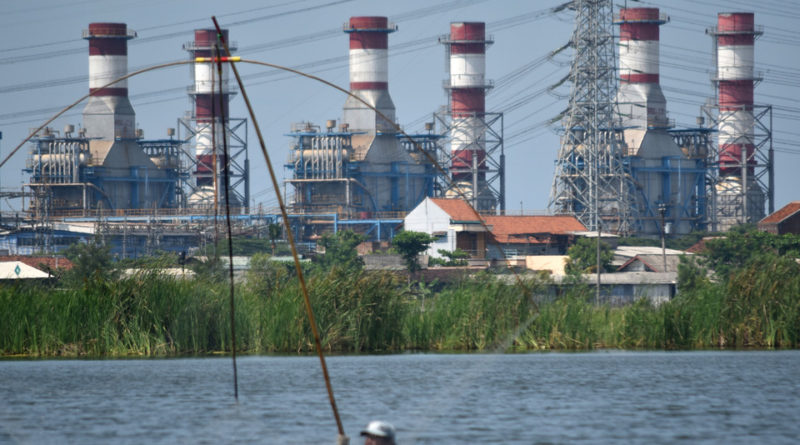OP ED OPINION: JAKARTA GLOBE EDITORIAL: Asean Energy Profile and The Role of Indonesia
BY :NUKI AGYA UTAMA

In developing countries, energy use from industry rises proportionally to gross domestic product (GDP), according to the 2017 report from the International Energy Agency or IEA. Between 2000 and 2015, Indonesia transitioned from agriculture to industry. The industry sector contributes around 39 percent of Indonesia’s GDP, and the annual energy consumption growth rate in this sector is projected to be 0.54 percent. The largest sub-sectors in Indonesia that contribute to the overall GDP are machinery and transportation equipment. It quadrupled between 2000 and 2016, increasing its share to overall industrial and service sector GDP from 8 percent in 2000 to 12 percent in 2016, the report showed.
The Asean Centre for Energy (ACE) launched the 6th Asean Energy Outlook on Nov 19, at the 38th Asean Minister on Energy Meeting (AMEM) hosted by Vietnam’s Ministry of Industry and Trade.
In the historical pattern in our baseline scenarios, Asean’s total final energy consumption (TFEC) is projected to increase by 38 percent by 2025 and 146 percent by 2040, from 375 million tonnes of oil equivalent (Mtoe) in 2017 to 922 Mtoe in 2040, mainly driven by increased demand in industry, transport, and households. This requires 874 Mtoe in 2025 and 1,589 Mtoe in 2040 of total primary energy supply (TPES).
In comparison, the Asean targeted scenarios assumed all member states are fully achieving their national energy efficiency and renewable energy targets and their climate commitments. The Asean member states’ efforts to meet their national targets slow energy demand growth, leading to the total final energy consumption of 474 Mtoe in 2025 and 714 Mtoe in 2040, 8 percent and 23 percent lower than the baseline scenario, respectively. The largest energy savings are in the industry due to upgrades to high-efficiency equipment, and the second-largest are from transportation through efficiency measures and adoption of electric vehicles.
Stepped-up renewable energy efforts to meet national targets under the Asean targeted scenario, meanwhile, push the share of renewables in total primary energy supply to 17.7 percent by 2025 and 22.1 percent by 2040. Moreover, in the Asean Plan of Action and Energy Cooperation (APAEC) scenarios (APS), when the APAEC 2016–2025 is being fully implemented, achieve 23 percent of TPES from renewable energy and reduce the energy intensity by 32 percent from 2005 levels, both in 2025. This results in a further reduction of Asean’s energy demand to 451 Mtoe by 2025 and 624 Mtoe by 2040.
The member states’ commitment to Sustainable Development Goals (SDG) is reflected in the SDGs scenarios assuming that households now cooking with traditional biomass or kerosene will switch to liquefied petroleum gas, some biogas, and natural gas, and especially in later years, electric stoves. Those efforts would not significantly affect the overall level of total primary energy supply relative to the Asean targeted scenarios. They would still sharply reduce traditional biomass share from 3.9 percent of total primary energy supply in 2017 to only 1.2 percent in 2025 and zero in 2040.
Asean would achieve the SDG 7 target of doubling the energy intensity reduction rate from 1990–2010 levels in 2015–2030 (this corresponds to 0.7 percent and 1.4 percent, respectively). From a global perspective, meeting the SDG target would require an average annual reduction of 2.6 percent by 2030. The outlook shows Indonesia is projected to play an important role in increasing energy demand in the region. The country’s total primary energy supply was around 203 Mtoe in 2017 and is projected to increase to around 622 Mtoe by 2040 (baseline scenario) from Asean’s total primary energy supply of 1,589 Mtoe.
In the power sector, the Asean region is expected to resume its major electricity demand growth after the Covid-19 pandemic subsides. For a renewable energy power plant, solar photovoltaics is projected to have the largest growth and share in the region (projected to be around 20 percent of total installed capacity of 548 gigawatts in 2040, based on the Asean progressive scenario).
Fossil fuel will remain dominant in the region’s power generation in the next two decades. Under the Asean targeted scenario, coal and gas power plants will still account for more than 359 gigawatts from 600 gigawatts of the region’s power capacity in 2040, assuming all member states implement their current energy policy without any changes. However, the region agreed to address environmental impact and emission from the power sector through clean coal technology (CCT) by adopting high efficiency, low emission (HELE) coal-fired power plants. Indonesia has already installed several supercritical and ultra-supercritical coal-fired power plants, which means other than exporting the feedstock, Indonesia can transfer its early-adopter expertise.
The renewable energy share in the region’s power sector is also assumed to increase drastically. Under the Asean targeted scenario, almost 50 percent of power will be coming from renewable energy generated power in Asean. Indonesia will have to increases its potential in renewable energy share, including biomass co-firing, geothermal, and hydropower, which accounted for the biggest potential with a very competitive production price.
In the Asean targeted scenario, the renewable energy share in the transportation sector is reflected by promoting higher biofuel consumption in transport and prioritizing renewable energy when adding new power plant capacity. Biofuel use rises from 5 Mtoe in 2017 to 29 Mtoe in 2025 and 79 Mtoe in 2040.
Indonesia’s potential lies mainly in biofuels and electric vehicles. Indonesia is the largest producer of biofuels in the region, particularly biodiesel, where it already implements the most blending rate in the region. It is predicted in the Asean targeted scenario that the region needs to import 600 Mtoe of fossil fuel and two-third of those are imported oil.
Electric vehicles would play a dominant role in reducing greenhouse gas emissions from transportation. If Indonesia could seize an opportunity to set up a solid electric vehicle industry
within the country, including the charger, vehicle parts, and battery, it will certainly a great benefit to the national economy. However, a full environmental impact assessment on its supply chain and the waste treatment of the battery reduction would also need to be considered.
.

Nuki Agya Utama is the Asean Centre for Energy’s executive director. He holds a Ph.D. in life cycle energy analysis.











